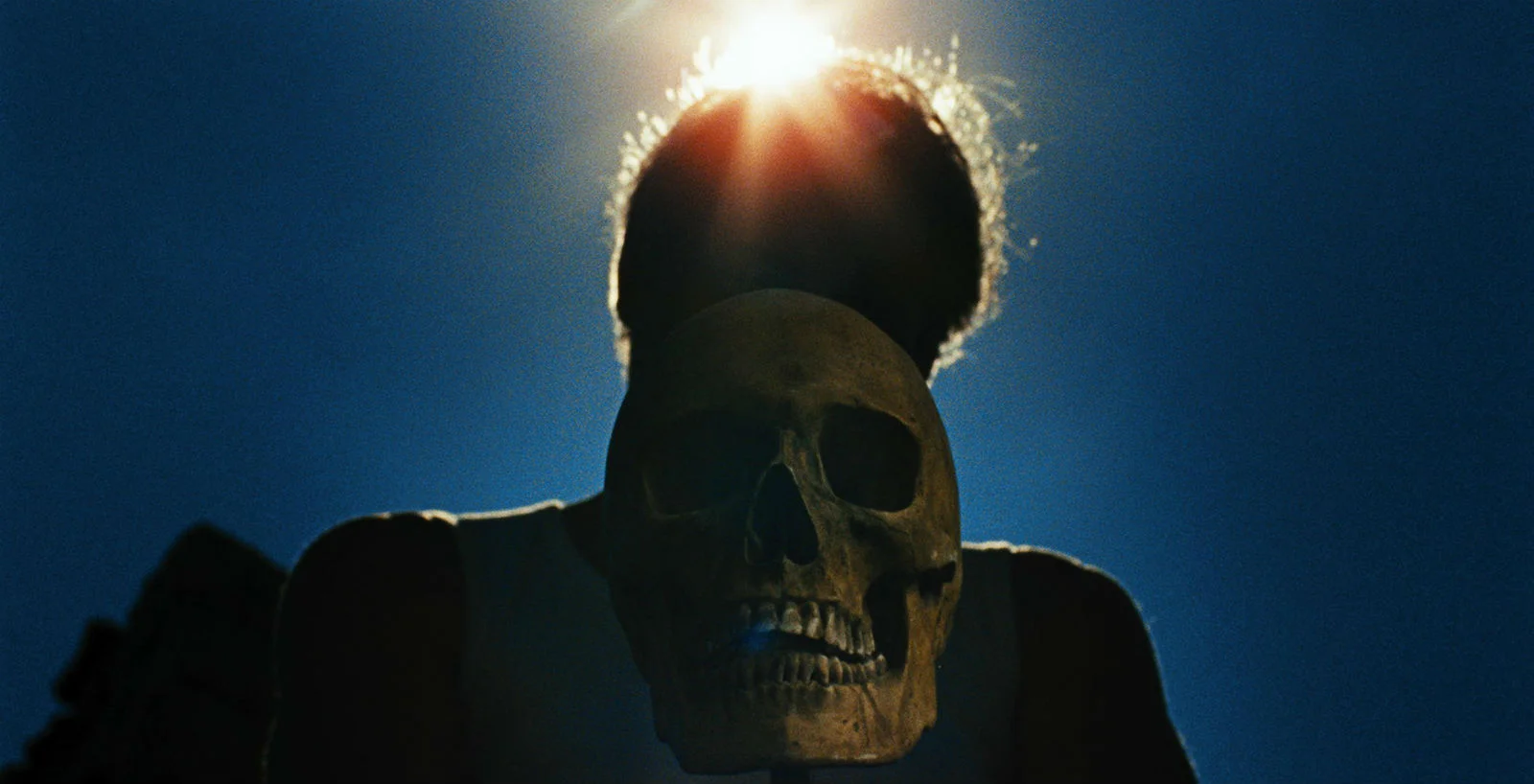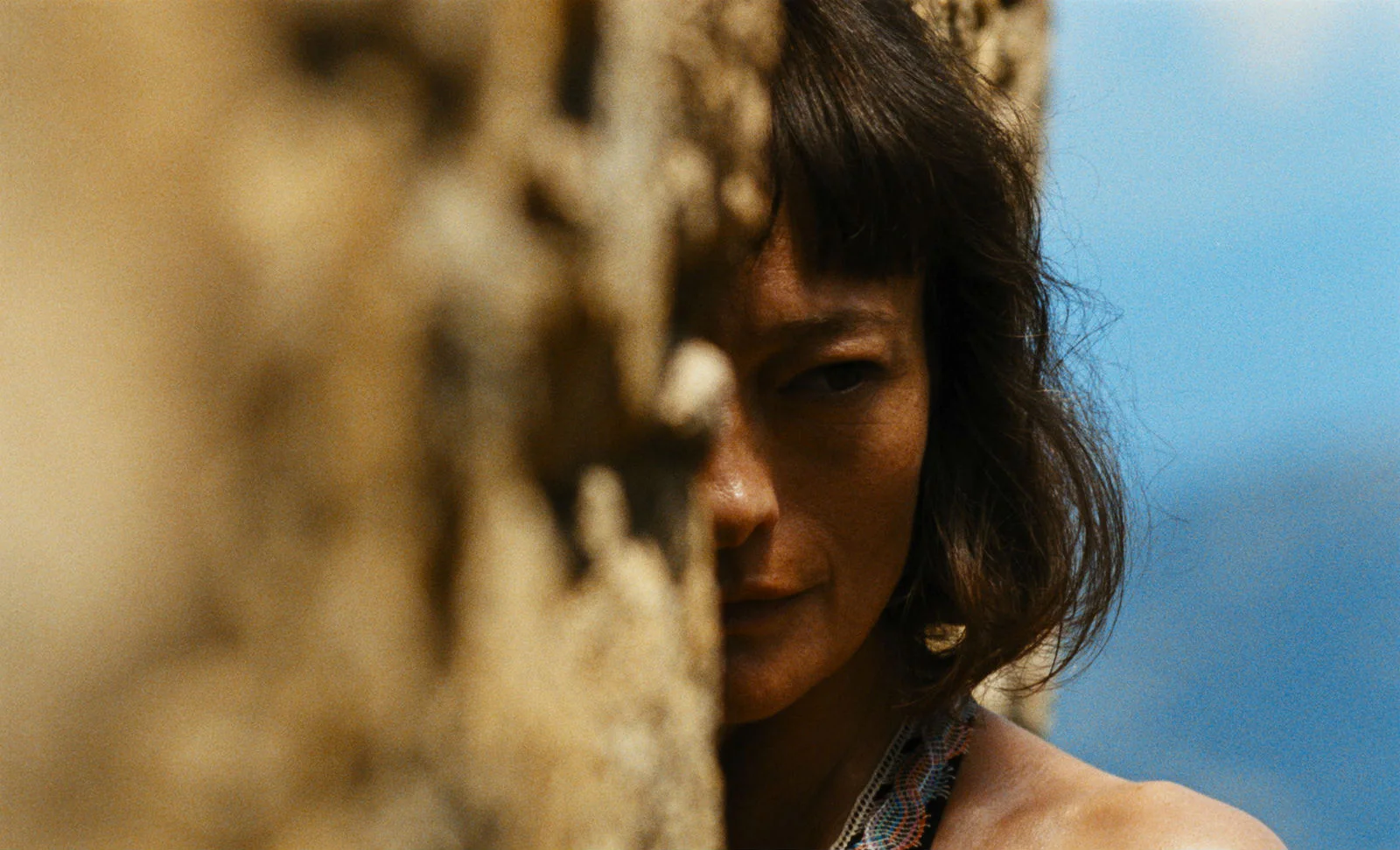Let the Corpses Tan: Ecstatic Visuals Power Hallucinogenic Crime Drama
By Liam Lacey
Rating: B+
A combination of meticulous craft and specialized appeal gives Let the Corpses Tan something of a model-ship-in-a-bottle appeal. If this is the sort of thing you like, you’ll love it. The hallucinogenic crime drama, by the Belgian-based French team of Hélène Cattet and Bruno Forzani, revels in retro-European exploitation cinema of the sixties and seventies with a care that borders on reverence.
Corpses will… tan!
The team behind the horror film Amer (2009) and The Strange Colour of Your Body’s Tears (2013) are all about rhythm, vibrant colour, and one weird, dazzling hyper-stylized sequence after another, shot in gorgeously grainy super-16 mm.
There’s a narrative here, based on a 1971 pulp novel by Jean-Patrick Manchette and Jean-Pierre Bastid, but it’s just barely follow-able. In an abandoned Mediterranean hilltop village overlooking the sea (the film was largely shot in Corsica), the middle-aged bohemian artist Luce (90s indie queen Elina Löwensohn) paints and oversees a loose commune, where wild orgies and happenings used to take place. The current group includes her younger lover, a shady lawyer (Michelangelo Marchese), and Max (Marc Barbé), a former beau who’s an alcoholic writer.
They are soon joined by three bank robbers: the sinister cigar-chomping Rhino (Stéphane Ferrara), the bald and portly enforcer (Bernie Bonvoisin), and the dead-eyed youngster (Pierre Nisse), who have stolen a bunch of gold bullion from an armored car and seek refuge with Luce, who Rhino somehow knows from the past. They are joined by Max’s soon-to-be-divorced young wife (Dorylia Calmel), her son and their maid (Marine Sainsily). Soon after, two motorcycle cops arrive and a prolonged multi-hour shoot-out begins.
Scenes are time-dated as afternoon slips into night, almost as a mockery of the non-linear narrative. There are double-crosses (the robbers break into warring factions), solarized images, colour-filtered night sequences, whip-pans and staggered cuts, violent erotic flashbacks, including sequences of hands massaging human flesh or hunks of meat. We stare down gun barrels, into flaming cigar ashes, bubbling eggs in the frypan, through flying embers and flames. Paint is splashed liberally, as is blood, gold dust, water and urine. Visual rhythms matter more than story.
Elina Löwensohn.
At the centre of this, as a figure of almost mythical erotic power, is Löwensohn. The Romanian-born star of nineties films of Hal Hartley (Amateur, Flirt) Michael Almereyda’s vampire movie, Nadja — and Jerry’s gymnast girlfriend on Seinfeld — has changed in fascinating ways with the years, her face sun-weathered and sharpened, though her body, decked in mini-dresses and scanty tops, still looks youthful.
The contrast is played within the film. In medium shots, Luce looks like a young woman. In close-ups, like one of the tough cowboys from a Sergio Leone movie, an association reinforced with snatches of Ennio Morricone on the score; deep genre fans could provide a complete index of homages to other films. Whether the sexuality is crypto-feminist, shamelessly fetishistic or irrelevant remains open to interpretation.
On second thought, it’s ungenerous to describe Let the Corpses Tan as a movie for genre geeks. The two directors’ gusto and sheer mastery of borrowed cinematic materials will reward anyone who loves to have their eyeballs excited… at least until they become exhausted.
Let the Corpses Tan. Directed and written by Hélène Cattet and Bruno Forzani. Starring Elina Löwensohn, Stéphane Ferrara, Bernie Bonvoisin, Hervé Sogne, and Michelangelo Marchese. Opens October 5 at Toronto’s TIFF Bell Lightbox.


